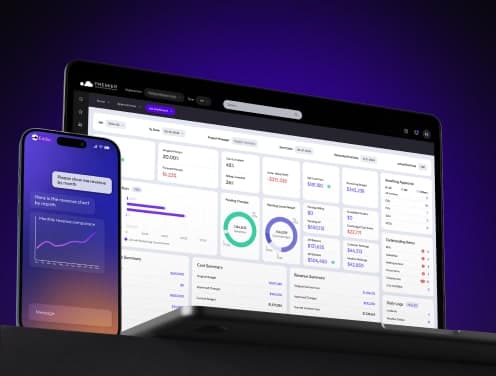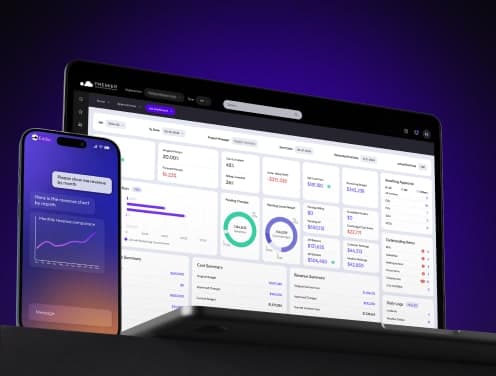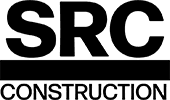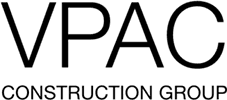
Project Management KPIs: Essential Metrics to Prevent Cost Overruns (2025 Guide)
With construction profit margins typically ranging from 2% to 10%, tracking the right KPIs for project management isn't just helpful—it's essential for survival. Budget overruns can quickly eat into these slim margins, turning profitable projects into financial nightmares.
We've seen firsthand how measuring budget variance—the difference between planned and actual budgets—helps project teams identify potential cost issues early. The most effective metrics in project management, like Cost Performance Index (CPI) and Earned Value (EV), provide clear signals when projects start to drift off course. When your CPI falls below 1.0, it's a warning sign that cost overruns are likely.
In this comprehensive guide, we'll walk through the essential project management KPIs that construction companies need to monitor. From tracking on-time completion percentages to understanding project margin calculations, we'll cover the metrics that directly impact your bottom line. Let's dive into the numbers that matter most for keeping your projects profitable in 2025 and beyond.
Why KPIs Matter in Project Management
Project tracking isn't just a nice-to-have – it's the backbone of successful project management. Research shows projects are typically 60% over schedule and 50% over budget without proper KPIs in place. Let's explore why these metrics matter so much for your bottom line.
The cost of not tracking performance
Poor performance tracking creates a domino effect of problems that can sink your projects. Without clear metrics, you'll face unforeseen costs, communication breakdowns, and uninformed decisions. These issues compound quickly – projects with inadequate tracking experience extended labour costs, increased equipment rentals, and sometimes even contract penalties.
The financial impact is staggering. In the construction industry, billion-dollar projects experience cost blowouts 28% of the time, with the typical overrun exceeding USD 600 million. Even smaller projects aren't immune. Furthermore, fewer than a third of all projects are completed on time and budget, highlighting how widespread this problem truly is.
Resource misallocation is another hidden cost. Without accurate progress data, overestimating or underestimating task timelines leads to inefficient resource utilization. Consequently, your team ends up stretched too thin or sitting idle – both scenarios drain your budget unnecessarily.
How KPIs help prevent budget blowouts
The right KPIs serve as your project's early warning system. They detect deviations from the plan before minor issues escalate into major setbacks. For instance, tracking the Cost Variance (CV) metric helps you spot cost overruns early, allowing for prompt intervention before expenses spiral out of control.
KPIs specifically designed for construction projects deliver multiple benefits:
- Enhanced decision-making: Clear, measurable data on financials, schedules, and risks enables informed decisions quickly
- Transparency and accountability: Everyone stays aligned and responsible for their part
- Risk mitigation: Identifying potential issues early prevents costly delays
- Performance monitoring: Continuous tracking creates benchmarks for improvement
Companies that excel at performance tracking gain a significant competitive advantage. As one industry expert notes, "If you have fewer efficiency leaks than your competitors, you're going to get more work and will be more profitable with the work you do get".
Aligning KPIs with project goals
For KPIs to be effective, they must directly connect to your project objectives. KPIs that don't reflect true priorities create confusion among team members who struggle to understand how their performance contributes to success. This misalignment wastes resources by directing efforts toward non-essential areas.
The solution? Apply the S.M.A.R.T. approach to your metrics: Specific, Measurable, Assignable, Realistic, and Time-related. Essentially, each KPI should target a specific improvement area, be quantifiable, have clear ownership, remain achievable with available resources, and include definite timeframes.
Importantly, involve stakeholders in selecting KPIs. Different stakeholders have varying priorities and perspectives on project success. For this reason, their input ensures the metrics you choose reflect what truly matters. Additionally, KPIs should be regularly reviewed and updated as projects evolve to maintain their relevance.
Remember that no single metric works perfectly for all projects. The selection and customization of KPIs should be based on your specific goals, scope, timeline, and budget. When done right, these metrics provide a non-biased foundation for decision-making that keeps your projects responsive to changing conditions.
8 Essential KPIs to Prevent Cost Overruns
Measuring the right metrics makes the difference between profitable projects and costly overruns. These eight essential KPIs give you real-time visibility into project performance while there's still time to correct course.
1. Cost Performance Index (CPI)
CPI measures cost efficiency by comparing earned value to actual costs (CPI = EV/AC). This vital metric shows how efficiently you're using your budget. A CPI above 1.0 indicates you're under budget (favourable), while a CPI below 1.0 means you're overspending. For example, a CPI of 1.15 means you're getting $1.15 worth of work for every dollar spent – a 15% cost efficiency.
2. Budget Variance
Budget variance quantifies the difference between your planned budget and actual project costs. This straightforward calculation (Project Cost – Actual Cost = Budget Variance) helps you quickly identify where costs are exceeding estimates. Tracking budget variance lets you catch problem areas early, focus resources on fixing them, and keep projects financially on track.
3. Earned Value (EV)
Earned value represents the budgeted cost of work completed. Unlike simple budget tracking, EV integrates both time and cost into a single metric. Calculate it by multiplying the percent of completed work by your budget at completion. This provides an objective measurement of progress against your planned goals.
4. Schedule Performance Index (SPI)
SPI reveals whether your project is ahead or behind schedule (SPI = EV/PV). An SPI greater than 1.0 means you're ahead of schedule, while an SPI below 1.0 indicates delays. Monitoring this index throughout your project lifecycle helps you anticipate potential delays, adjust resource allocation, and optimize workflows.
5. Resource Utilization Rate
This metric shows the percentage of available resources being effectively used. Proper resource utilization prevents overtaxing your team while maintaining efficiency. Most project managers aim for around 80% utilization – high enough for profitability while leaving room for non-billable work.
6. Billable Utilization
Billable utilization measures the percentage of time spent on revenue-generating activities versus total working hours. This critical metric directly impacts profitability – even minor adjustments can significantly improve your bottom line. The formula is simple: (Billable Hours / Total Available Hours) × 100. Most experts suggest a realistic target between 70% and 80% to balance profitability with employee well-being.
7. On-Time Completion Rate
This KPI tracks the percentage of projects completed by or before deadlines. Calculate it by dividing the number of on-time projects by the total number of projects. Besides measuring schedule efficiency, this metric helps identify bottlenecks, improve communication between departments, and foster accountability.
8. Rework Percentage
Rework percentage measures how much work must be redone due to errors or quality issues. Calculate it by dividing rework hours by total productive labour hours and multiplying by 100. A high rework rate signals quality problems and inefficiencies that directly impact your budget. By tracking this metric, you can identify root causes like inadequate testing, poor communication, or ambiguous requirements.
Using Premier Construction Software dashboards to monitor these KPIs gives you real-time visibility into project performance. Rather than discovering problems after the fact, you'll spot potential issues while there's still time to take corrective action and keep your projects profitable.
How to Choose the Right KPIs for Your Projects
Selecting the perfect KPIs for your construction projects isn't about tracking everything possible. Instead, it's about choosing metrics that truly move your projects forward and prevent budget overruns.
Start with your business objectives
Before selecting any KPIs, clearly define what you're trying to achieve. Your KPIs must directly connect to your core business goals. A general rule is to focus on no more than 3-5 company goals in 12 months. Without this alignment, you'll waste valuable time and resources measuring things that don't help your projects succeed.
Ask yourself: What specific problems are we trying to solve? Are we aiming to reduce costs, improve timeline accuracy, or boost resource efficiency? Each objective requires different metrics to track progress effectively.
Involve key stakeholders
KPI selection shouldn't happen in isolation. Engaging a cross-functional group from different departments ensures your metrics reflect broader organizational goals. Project managers, finance teams, and field supervisors all bring unique perspectives on what constitutes success.
This collaborative approach does more than just improve your metrics—it creates shared ownership. When team members contribute to the KPI selection process, they develop a more substantial commitment to achieving those targets. Additionally, stakeholder engagement transforms KPIs from internally focused metrics into externally relevant measures of actual organizational performance.
Balance leading and lagging indicators
A robust performance framework needs both types of indicators. Leading indicators predict future performance, while lagging indicators measure past results.
Leading indicators help you:
- Forecast trends and anticipate changes
- Make proactive decisions
- Focus on factors that drive future outcomes
Lagging indicators allow you to:
- Assess historical performance
- Compare against benchmarks
- Validate whether your strategies worked
Using only lagging indicators means you'll know what happened, but you won't have enough guidance for future decisions. Conversely, relying solely on leading indicators might result in overlooking opportunities and responding late to changing circumstances.
Avoid vanity metrics
Vanity metrics make your project look successful on the surface, but provide little actionable insight. These deceptive numbers include raw page views, total customers, or follower counts.
The quickest way to identify a vanity metric? Ask: "Can this metric lead to a course of action or inform a decision?" If the answer is no, reconsider tracking it. When a metric goes up or down and you don't change your approach, it's probably a vanity metric.
Instead, focus on metrics that allow you to manage cause and effect. If you can't consistently reproduce the exact result or improve the process, then the metric isn't helping your project succeed.
Tools to Track and Visualize KPIs in Real Time
Real-time visibility into your project KPIs can make all the difference between proactive management and reactive damage control. As projects grow more complex, the tools you use to track these metrics become increasingly important.
Why spreadsheets fall short
Despite their popularity, spreadsheets create significant barriers to effective KPI tracking. According to industry experts, spreadsheets present multiple challenges that make them unsuitable for monitoring project performance:
- Data integrity issues - They're vulnerable to input errors with inadequate validation capabilities
- Security concerns - Spreadsheets lack proper protection against unauthorized changes to formulas and data
- Limited visualization - Turning rows of numbers into actionable insights requires extra effort
- Speed problems - Files become sluggish as they grow in size and complexity
- Poor trend analysis - Comparing historical data against current performance is cumbersome
Monitoring KPIs effectively is practically impossible with spreadsheets alone. They're simply too cumbersome and prone to issues with data security, tracking metadata, and maintaining data integrity.
Using Premier Construction Software dashboards
Premier Construction Software offers specialized dashboard tools explicitly designed for construction project management. These dashboards provide:
- Interactive visualizations with drill-down capabilities for detailed financial insights
- Real-time monitoring of job profitability, cash flow, and project KPIs
- Custom views displaying specific metrics like task status and resource allocation
- Visual representations that help teams understand performance at a glance
Premier's dashboards transform complex data into clear, actionable metrics in exportable files. The platform centralizes all project information in a secure cloud environment accessible anytime, from anywhere.
Automated alerts and real-time updates
Modern KPI tracking goes beyond passive monitoring through automated notification systems. Premier's platform includes:
- Automated alerts when specific KPI thresholds are met or exceeded
- Email notifications for task completions, approaching deadlines, and budget overruns
- Real-time updates that keep relevant team members informed as projects develop
- Role-based permissions ensuring team members only access relevant materials
These automated alerts allow you to address potential issues before they become significant problems proactively. With every data load, the system checks KPI values against your defined thresholds, sending notifications when action is needed.
Best Practices for KPI Tracking in Construction
Tracking KPIs effectively requires a methodical approach in construction projects. Simply selecting metrics isn't enough—you need systematic implementation to make your data truly valuable.
Set realistic benchmarks
Initially, compare your performance against industry standards, historical data, or internal goals. There's no universal "perfect" number for every KPI, yet setting clear baselines at the project's outset creates meaningful measurement points. These benchmarks help identify when an area needs attention, whether it's efficiency, cost control, or project execution.
Review KPIs weekly or bi-weekly
Regular reviews are crucial for effective project management KPI tracking. Establish consistent check-in schedules—daily, weekly, or monthly, depending on the metric. This consistency builds reliable data trends while enabling timely interventions. Moreover, rapid insights drive agility in decision-making throughout your project lifecycle.
Use visual dashboards for clarity
Visual tools like dashboards enable quick interpretation of complex performance metrics. Heat maps, charts, and trend lines effectively display cost, schedule, and safety data. Premier Construction Software's dashboards transform complex numbers into actionable insights through clear visualizations.
Train teams on what each KPI means
Educate your team about what each metric measures and its significance in assessing progress toward goals. Provide up-front training for key stakeholders who can demonstrate why these metrics matter. Notably, investing in technical and analytical training maximizes the return on your KPI tracking efforts.
Key Takeaways
Master these essential project management KPIs to protect your construction company's slim 2-10% profit margins and prevent costly budget overruns that can turn profitable projects into financial disasters.
• Track Cost Performance Index (CPI) religiously - when it drops below 1.0, you're overspending and need immediate corrective action
• Monitor eight critical KPIs, including Budget Variance, Earned Value, and Resource Utilization Rate, to catch problems before they escalate
• Ditch spreadsheets for real-time dashboards with automated alerts - they provide actionable insights and prevent data integrity issues
• Review KPIs weekly or bi-weekly and train teams on what each metric means to ensure consistent, informed decision-making
• Balance leading indicators (predict future issues) with lagging indicators (measure past performance) for comprehensive project visibility
Without proper KPI tracking, construction projects are typically 60% over schedule and 50% over budget. The right metrics serve as your early warning system, helping you spot cost overruns, resource inefficiencies, and schedule delays while there's still time to take corrective action and maintain profitability.
FAQ
Q1. What are the most important KPIs for preventing cost overruns in construction projects? The most critical KPIs include Cost Performance Index (CPI), Budget Variance, Earned Value (EV), Schedule Performance Index (SPI), and Resource Utilization Rate. These metrics provide early warnings of potential budget issues and help project managers take corrective action before problems escalate.
Q2. How often should project managers review KPIs? It's recommended to review KPIs weekly or bi-weekly. Regular check-ins allow for consistent data trend analysis and enable timely interventions when issues arise. The frequency may vary depending on the specific metric and project needs.
Q3. Why are spreadsheets inadequate for tracking project KPIs? Spreadsheets have several limitations for KPI tracking, including data integrity issues, security concerns, limited visualization capabilities, and difficulty in performing trend analysis. They become cumbersome and slow as projects grow in complexity, making real-time monitoring challenging.
Q4. What advantages do specialized project management software dashboards offer? Project management software dashboards provide real-time monitoring, interactive visualizations, automated alerts, and centralized data storage. They offer better data security, easier trend analysis, and the ability to transform complex data into actionable insights quickly.
Q5. How can project managers ensure their teams understand and act on KPI data? To maximize the effectiveness of KPI tracking, project managers should train their teams on the meaning and significance of each metric to project goals. Using visual dashboards for clarity and setting realistic benchmarks helps team members interpret data and take appropriate action when needed.





















